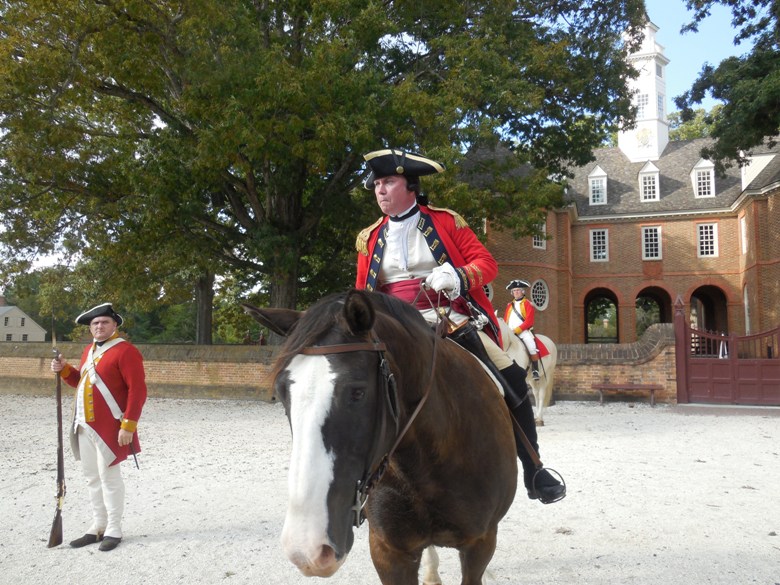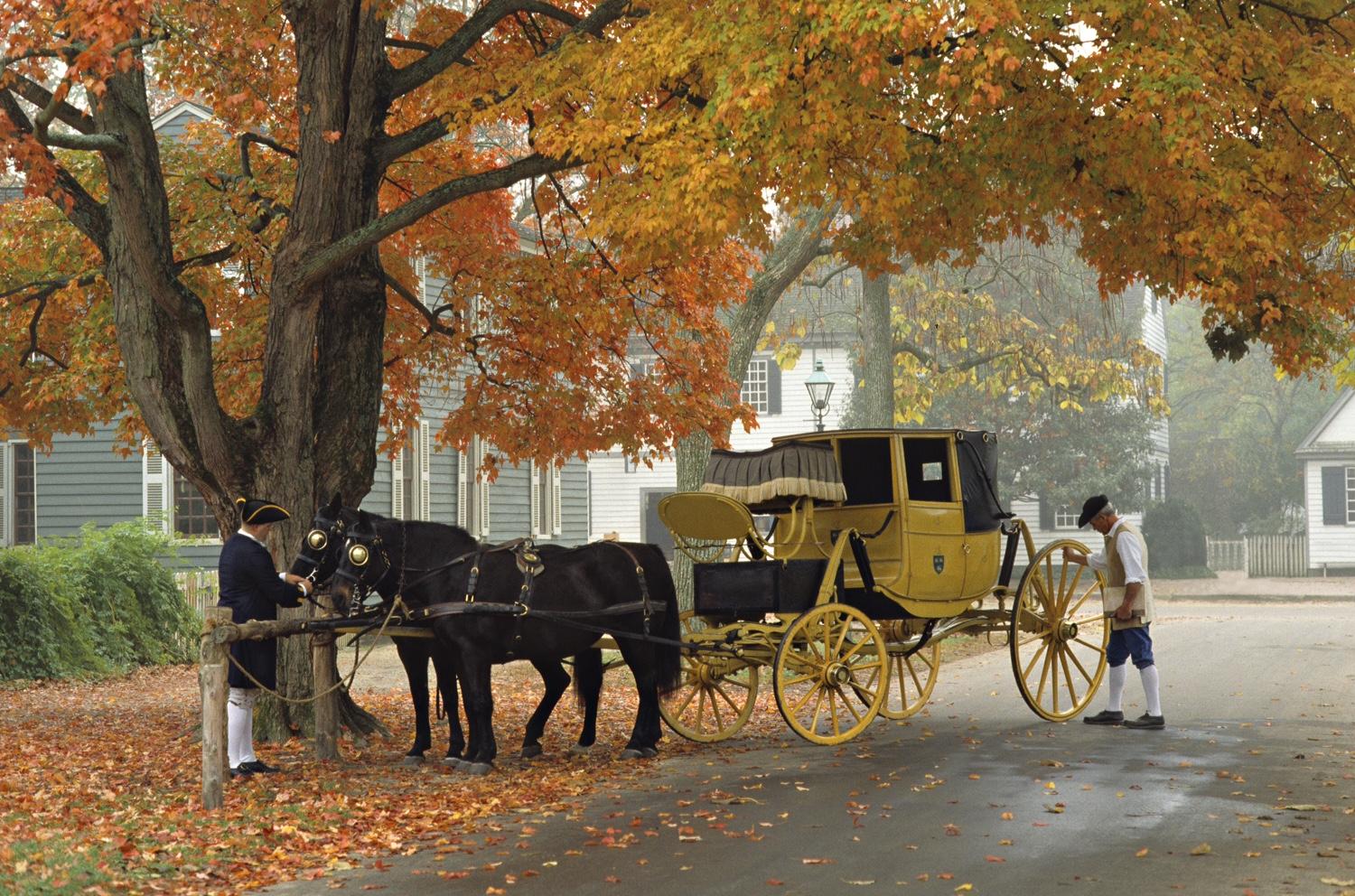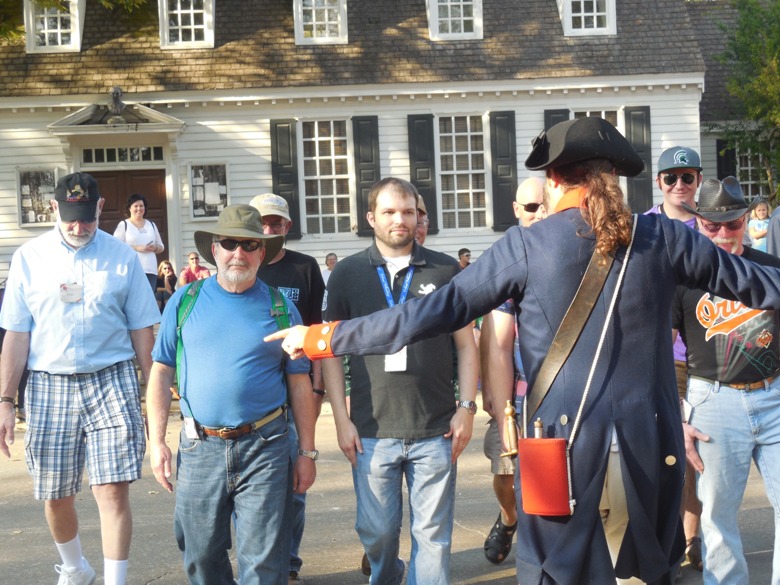By Eileen Ogintz
WILLIAMSBURG, VA. (Day Three) — Do you believe in the world unseen, Sarah Pellham asks.
We are in Colonial Williamsburg and Sarah Pelham, a young citizen of the 18th Century city, is telling us a ghastly tail of demons and murders.
“I’m talking about things that have never been human… agents of evil,” she says. “Demons lurk in corners… any dark, sharp angular corner… they are just waiting for the opportunity to enter our world and do grievous harm!”
She gets more agitated as she speaks. Is there a better way to get ready for Halloween?
“Really good!” declared Jenna Denton, here with her dad from North Carolina.
Colonial Wiliamsburg, the 13 year old said, “is very informative but in a fun way,”
She was especially enthusiastic about the RevQuest: The Old Enemy through which “questors” must work covertly in the streets of 18th Century Virginia encountering secret agents and discovering mysterious documents while they pursue a series of clues—while they send and receive secret messages via text. You can begin the mission virtually; when they get to Williamsburg, they pick up the free game materials.
“You couldn’t predict what would happen,” Jenna said. I really felt Like I accomplished something when I finished.”
21st Century meets 18th Century—that’s the idea of Colonial Williamsburg. The audience was enthralled by the street theater Revolutionary City where costumed interpreters play out different aspects of the politics surrounding the American Revolution. Locals accuse a shopkeeper of “hoarding” salt when they are going without; Turncoat Benedict Arnold tries to convince townspeople that the Continental Army is finished; slaves argue whether they could trust Britain’s offer to set them free if they follow the troops.
Really, we think, is politics that much different today — everyone having different, often heated opinions.
A Continental officer recruits “soldiers” for the last push at Yorktown. They march behind the famous drum and fife corps and look smart. Shouts of “huzzah” greet the Blue Coats. There are 88 original buildings and 225 period rooms here and close to 500 buildings reconstructed on the basis of extensive research—some 20 million archaeological artifacts have come from excavations right here.
Visit a wigmaker (wigs were often made of goat hair); a tinsmith; a weaver; a book binder. “They had to make everything by hand,” one young girl marveled.
See bread being made at an outdoor oven or food prepared in the Governor’s Palace kitchen with 18th Century recipes and tools (no Kitchen Aid mixers! No refrigerators!). Play 18th Century games like hoop and stick. The list goes on and on… this is one place you can really let the kids lead the way. “The best part,” said Noah Simmons, “You walk around right in the middle of it all.”
Let’s not forget this is also a resort with six hotels (including the chance to stay in Colonial Houses), 11 restaurants, a spa, three golf courses, eight tennis courts, pools and even a lawn bowling green.
Noah Simmons, 11, said he especially liked eating in one of the historic taverns, the tables lit by candlelight, strolling musicians playing 18th Century music. But was the food old fashioned? “I had a cheeseburger,” Noah said, though he did try a meringue with ice cream for desert.
These days, Colonial Williamsburg chefs are even planting and harvesting vegetables right from the Historic Area. There’s a relatively new taste studio program where guests can take a tour of these gardens and then visit the demonstration kitchen where the chefs prepare what the have been grown, influenced by colonial history—think honey roasted fig salad. On Saturday mornings, there’s now a big farmer’s market that draws some 35,000 people during the year.
We learn that in 1775, more than half of Williamsburg’s population was of African descent, most of them slaves. This is a great place to hear and learn their stories. Like Kate and Eve who perform during the “Revolutionary City “ experience, their friendship fraying because of their differing views on seeking freedom with the British. There is an African American Music program and Freedom Denied: Slavery in the Time of Liberty where the slaves struggle to understand how their masters can fight for their own liberty from Britain but deny the slaves theirs. Visit a slave house at the Great Hopes and see how urban African Americans lived at the Peyton Randolph House.
There are so many layers to every story here. “We needed so much nore time,” said Casey Simmons.
The 18th Century will still be here next visit.



